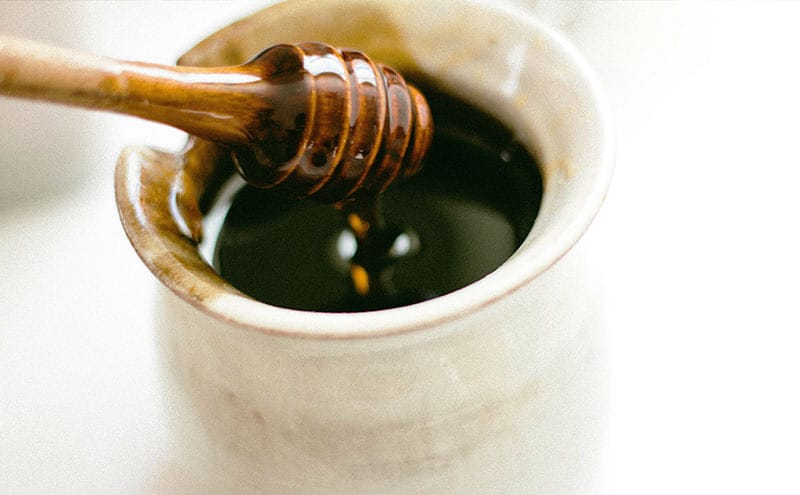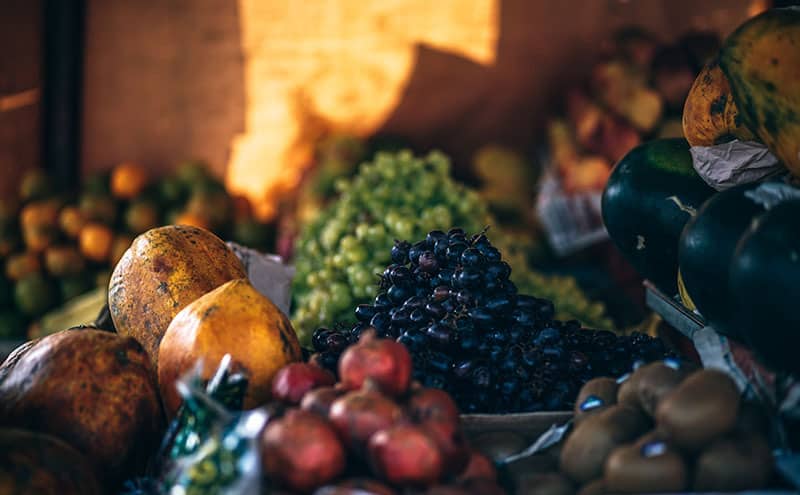
At a Glance
- Fructose is a sweet-tasting substance which naturally occurs in fruits, some vegetables, honey and other plants. It is also referred to as “fruit sugar”.
- Although it has a similar chemical formula to glucose, glucose is a molecule vital for life, whereas fructose is not.
- Sucrose, standard table sugar and high fructose corn syrup all supply a large proportion of the calories we consume daily.
Fructose can be thought of as similar to Arya Stark from Game Of Thrones – how can something so sweet be so bad? Fortunately, fructose from fruit is not bad for you, the real dangers come from added sugars and high fructose corn syrups. Fruit is a minor source of fructose compared to these added sugars.
To understand why fructose can be bad for you we must first look at what fructose is, where we can find it and how fructose is metabolized by the body. Sit back, grab an apple but just avoid that sugary soft drink.
What Exactly Is Fructose?
Fructose is a monosaccharide or put simply: a single sugar. It’s one of the simplest forms of carbohydrate. As the term “mono” suggests, it contains only one sugar group which cannot be broken down any further. The other most common monosaccharide is glucose which when combined with fructose forms sucrose, a disaccharide better known as table sugar or white sugar.
Fructose is found in abundance in fruits, honey and sap as the fluid that transports nutrients throughout the plant. The sweetness that the fructose gives the fruit is what makes it so attractive to many people’s tastes. Glucose can also be found in fruits but is digested by the body differently.
High fructose intake has been linked with fatty liver, higher levels of triglycerides, insulin resistance and obesity. Between 1977 and 1978 the mean consumption of fructose was 37g/day but this rose to 54.7g/day in 2008, making up 10.2 percent of the daily caloric intake. (source) A rise of nearly 50 percent in 30 years has set the alarm bells ringing for this natural sugar that our ancestors have consumed for many years before us.
What’s the Difference Between Glucose and Fructose?
Both glucose and fructose are important carbohydrates often referred to as simple sugars. That’s where the similarity stops. Glucose is by far the most important and is the body’s preferred energy source.
Glucose is also known as blood sugar, as it moves around the body in the blood and relies on enzymes to start metabolism. Most of the carbs you eat are broken down into glucose to be used straight away for energy or stored in the muscles or liver as glycogen for later use. When glucose levels are high, the body has its own regulation system using insulin which allows the glucose to enter cells.
While virtually every cell in the body can use glucose for energy, only the liver cells can metabolize fructose. Fructose does not stimulate the normal production of insulin or leptin hormones the way other sugars do.
Too Much Fructose Is Bad For Your Body Fats
One type of product of fructose metabolism in the liver is triglycerides, a type of fat. Triglycerides can build up in the liver and interfere with liver function. When released into the blood, triglycerides can add to fat inside the arteries, creating blockages which lead to heart attack and stroke further down the line.
Studies have shown that consuming high levels of fructose can raise triglycerides to an unhealthy level especially when consumed as concentrated fructose in many soft drinks sweetened only with fructose. (source) Most energy drinks are made with a combination of sugars in addition to fructose which makes it easier for the body to absorb glycogen produced in the liver.
Although fructose is the main sugar in fruits, it occurs in relatively small quantities as it is diluted by the high fiber and water content of the fruit. In addition, the fiber naturally found in whole fruits can help slow down the absorption of fructose into your blood.
Artificial sweeteners are often high in fructose and contain empty calories unlike fruits which have many beneficial nutrients including vitamins, minerals and antioxidants.
Your Body Thinks It Can Never Have Too Much Fructose
Unlike other foods, fructose does not satisfy hunger. Therefore, when somebody eats foods high in fructose they continue to eat even if they have already consumed more than is required. A high intake of fructose rich foods can fail to stimulate the normal production levels of leptin.
Leptin is an important hormone which regulates the energy balance of the body. When we have enough energy, leptin levels rise; leptin levels go down when we need more energy or calories. It’s the body’s natural way of telling us when to start or stop eating. The lower levels of leptin production can have serious effects on the regulation of your food intake and body fat. When eating fructose rich foods your body never gets those “I’m full” signals from the brain and so you continue eating in excess.
Fructose has actually been shown to make you more hungry in a study published by the American Medical Association. A group of 20 healthy adults were shown to suffer a small spike to the appetite increasing part of the brain when they consumed fructose. In effect the study concluded you may be “programming” your body to consume more calories as fructose can even trigger hunger pains. (source)
Fructose and Diabetes
Fructose is often touted as a diabetic safe sugar. Many diabetics use fructose based sweeteners as fructose is very low on the glycaemic index and does not quickly convert into glucose, thus it won’t send their blood sugars rocketing sky high. But unfortunately fructose won’t help them keep their weight down and may well add to the risk of obesity and further diabetic complications.
In his book, “There Is a Cure for Diabetes”, Dr Gabriel Cousens set out to debunk the myth that fructose doesn’t contribute to diabetes. Dr Cousens argued that fructose is directly associated with diabetes, especially high fructose corn syrup. Researchers in 2004 found use of high fructose corn syrups and other sweeteners was 2,100 percent higher than in 1909 and could be associated with higher levels of diabetes. (source)
Too much fructose may even lead to diabetes in previously healthy individuals. Because fructose is not regulated by insulin, like glucose, it can lead to insulin resistance and type 2 diabetes as well as obesity. Insulin resistance causes higher levels of insulin and insulin like growth factor IGF-1 in the body which have been linked with ultimately causing cancer.
Fructose Speeds Up Growth of Cancer
It seems everyday we are being told that something we enjoy causes or contributes to cancer. The theory that sugar feeds cancer was first studied over 80 years ago. Cancerous tumor cells can thrive on sugar (glucose) but the cells use fructose for cell division, speeding up growth and the spread of the cancer.
Tumors use glucose as a fuel for cancer cells, creating lactic acid as a byproduct. Large amounts of lactic acid are transported to the liver where it can cause a more acidic pH in cancerous tissues and physical fatigue from a lactic acid build up.
More recent research has found that fructose is readily metabolized by cancer cells to increase proliferation. Fructose metabolization pathways can also synthesize nucleic acids and increase the production of uric acid. The 2010 study recommended that efforts to reduce refined fructose consumption may disrupt cancer growth. (source)
Fructose and Gout
Roughly 3.9 percent of the US population is said to be affected by gout – that’s around 8.3 million people. (source) Gout is nothing new, it is one of the most frequently recorded medical conditions throughout history. Various foods have been blamed for causing gout, it was even once called the “rich man’s disease” due to the belief that it was caused by a “rich” diet, heavy in meat.
Gout is a type of arthritis caused by the buildup of uric acid crystals in the joints. As the body metabolizes fructose, chemical compounds called purines are released which break down to produce uric acid, the source of those painful crystals. Shortly after consuming a high fructose corn syrup based soda – sometimes in minutes – your uric acid levels rise.
A 2008 study found that men who drink just two cans of sugary fructose soft drinks a day increase their chances of suffering gout by 85 percent. (source) Although alcohol has also been shown to cause gout, that “diet” mixer you are adding to your vodka may be doing just as much, if not more, harm.
Fructose Malabsorption and Intolerance
After reading this far I wouldn’t blame you if you never want to touch fructose again! Unfortunately it’s not that easy as fructose can be found in most plant based foods, especially those fruits it would be so hard to give up. However, for some people avoiding fructose completely is as important as a celiac cutting out gluten.
Hereditary fructose intolerance is a rare but potentially life threatening condition in which the liver does not produce the correct enzyme to metabolize fructose. As a result fructose gathers in the liver and prevents glucose being turned into glycogen, starving the body of glycogen or energy. This can lead to severe hypoglycaemia (low blood sugar) and if not treated can result in a coma or even death. The only treatment for genuine fructose intolerance is strict elimination of fructose from the diet.
Fructose malabsorption is far more common and is thought to affect up to 50 percent of the population. (source) In this condition the body is deficient in the protein which transports fructose to be absorbed through the gut and into the liver.
This leads to the fructose continuing through the intestines where it ends up in the colon to be broken down by bacteria into short chain fatty acids and gases. Resulting symptoms include bloating, flatulence and diarrhea. Absorption of fructose can be greatly enhanced if it is taken with glucose; one molecule of glucose will transport one molecule of fructose through the gut and into the liver.
Should We Stop Consuming Fructose?
You’re probably thinking that the only way to stay healthy is to avoid having fructose in your body ever again. However it’s not all bad news, fructose from added sugars are the main threat. Refined fructose and high fructose corn syrups are found in many products these days and we should be careful how much of them we consume.
Luckily all the health scares we have looked at don’t really apply to fruits. Fruits are not just empty calories, but are complete foods with fiber, vitamins, minerals and a low energy density.
To consume an amount of fructose that could be considered harmful you would have to eat a lot, and I mean a LOT, of fruit. Fruit is a relatively minor source of fructose in the modern diet compared to added sugars and sweeteners.
To cut down on your fructose levels is relatively easy. Many of the sugars and particularly fructose come from the soft drinks we consume. In 2015 consumption of soft drinks in the US was estimated to be 40.7 gallons per person. (source)
Replacing packaged foods which are high in added sugars with natural fruits or vegetables can also help curtail your fructose consumption. And finally, try and steer clear of high fructose corn syrups, they have very little nutritional value other than being very sweet.
Which brings us back to Arya Stark, she may be sweet but you wouldn’t want too much of her in your life!



Leave a comment